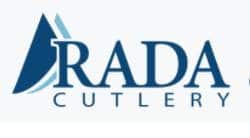Asset-based giving seems to have had a slow learning curve and adoption rate within the church community. But the biggest obstacle boils down to a simple question: Does this help our people or does this feel like a fundraising fad?
Of course, there are several significant benefits of asset-based stewardship strategies:
- Asset-based giving can result in significant gifts both today and in the future.
- Asset-based giving may lead to ministry-changing gifts.
- Asset-based giving allows the giver to tap into a much larger pool of resources.
Right away, you can see how asset-based stewardship strategies have the potential to change how people think about and act upon the desire to be generous. The increase in ministry funding alone is enough to get any nonprofit excited about implementing an asset-based fundraising strategy.
But for long-term Kingdom impact to occur, we must stop a moment to gauge the motives of our heart.
Colleges, health institutions or well-known nonprofits request funds on a regular basis—and asset-based stewardship is just one of the tools they use. Their donor base is not surprised when approached for a non-cash gift such as stocks, real estate, or mineral rights.
However, a church must take a different approach. In fact, the direct appeal used by other nonprofits might not always be the best approach.
That’s because the church is more than a cause—it’s a community. And a divine one at that…led by none other than the Son of God Himself.
Within the church, the key is to move beyond a simple appeal and help people see how giving out of assets helps them become more deeply involved in the work of your ministry.
How do you ensure that your heart and your ministry are positioned correctly to fulfill this tall order? These five tests can lead us to the answer:
Test #1: Is your church known for its generosity?
- Are you and your congregation already investing in the lives of the community outside the church walls in a meaningful way?
- If so, how well are you telling that story?
Test #2: Does your church participate in open-handed giving?
- Do you encourage your congregation to donate to other organizations?
- What is your response to hearing that news?
Test #3: What is the condition of the heart of the “asker?”
Consider the individuals tasked with being the face of the organization to the potential donors:
- Are they good stewards?
- Reputable?
- Do they have a healthy view of “wealth?”
Test #4: How is the church going to use the money?
- Is it going to salaries or overhead?
- Or will it be going to something else?
- Does this “something else” align with the values, goals or desires of the giver?
- How transparent are you being with your congregation about how funds are used?
Test #5: Are you an equipping church in other ways?
- Is your church already supporting and equipping as outlined in Ephesians 4 – OR –
- Would the asset-based stewardship appear to be disjointed from the church’s heartbeat?
If you thoughtfully answer the five questions posed here, you’ll see that asset-based giving can be an integral part of your church and not a trend. It can be sustained to give you long-term results if it fits the cultural heartbeat of your church, embodying integrity and consistency.
There are individuals in your community who can bless you in a significant way. Are you purposeful about serving them?
This information is courtesy of The Giving Crowd, which has more than 50 years of combined experience in major donor development, planned giving, capital campaigns and technology. Their turn-key approach “supercharges” your overall funding approach by adding significant short and long term asset gifts, www.givingcrowd.co.








